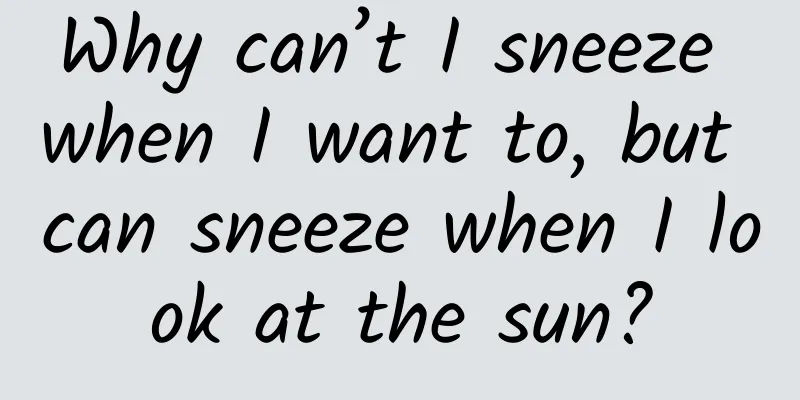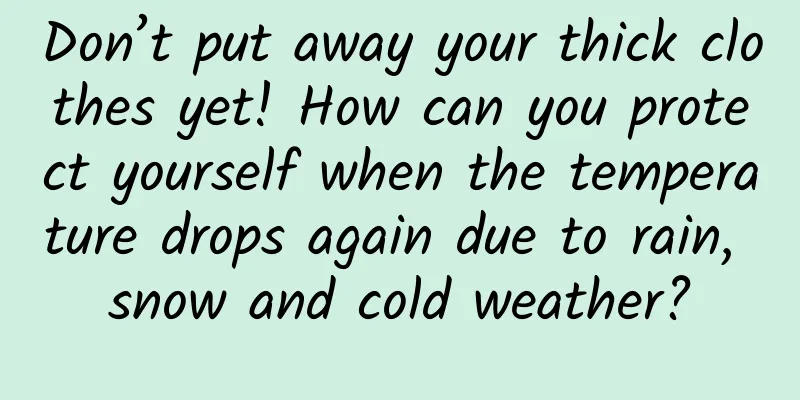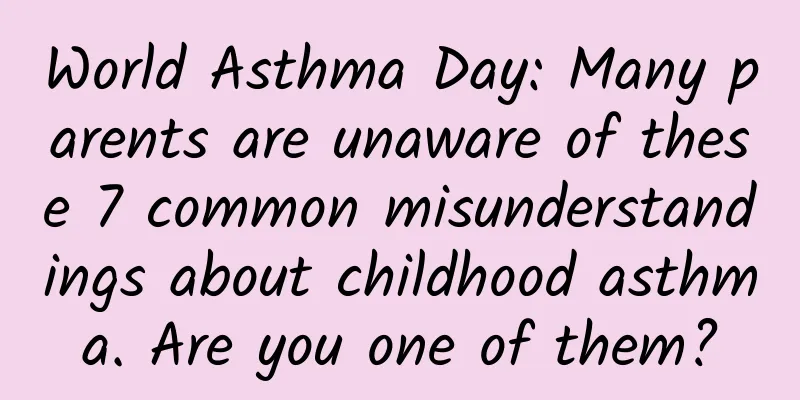Why can’t I sneeze when I want to, but can sneeze when I look at the sun?

|
For many years, I always thought that I possessed an almost magical "special ability" - every time I looked up at the scorching and dazzling sun or bright lights for a few seconds, I would sneeze, which made me develop an irrepressible curiosity about it. When I was a kid, I would sneeze when I looked at the sun. Image source: Generated by the author using DALL-E3 However, it was not until more than 30 years later that I accidentally discovered a surprising fact: when my colleague said he wanted to sneeze, he turned his head to look at the sun outside the window, and then he sneezed. At that moment, I realized that this was not my personal "special ability", but a more common physiological phenomenon. So the question is, what is the principle of sneezing when exposed to light? Let's start with the sneezing itself. How does a sneeze occur? When our nose, throat or other respiratory tract is irritated by dust, pollen, viruses, bacteria or other foreign matter, sensory nerve cells in the body are activated . These cells send signals to the brain through the trigeminal nerve, specifically to the medulla oblongata. The medulla oblongata is a very important neural structure responsible for controlling many basic functions of the autonomic nervous system, including breathing, heartbeat and digestion. Nerve cells are activated. Image source: Generated by the author using DALL-E3 After being analyzed and processed by the medulla oblongata, these signals are then sent out through the vagus nerve and the phrenic nerve to activate the relevant muscle groups. In order to more effectively remove the irritant, the body will first take a deep breath, which is mainly led by the diaphragm and chest muscles. Then, in an instant, the air is strongly forced out from the lungs through the nasal cavity and mouth. This series of complex but highly coordinated movements constitutes the sneeze we are familiar with. Why does looking at the sun help with sneezing? Do you sneeze loudly when you look up at the sunny sky? If so, you are not alone. This phenomenon is called "autosomal dominant compelling helio-ophthalmic outburst" (ACHOO), and it also has a more professional name: compulsive autosomal dominant compelling helio-ophthalmic outburst syndrome. According to statistics, 18% to 35% of the world's population will trigger a sneezing reaction when exposed to bright light. Image source: pexels At present, the exact mechanism of photosensitivity sneezing reflex is still controversial, but the following theories are widely accepted: 1 Cross-stimulation theory This theory suggests that the eye's response to light crosses over with the neural pathways that trigger sneezing. In humans, the signaling pathways of the optic nerve and nasal nerve may be close to or cross each other in the brain. When bright light stimulates the eye, the signal may partially "leak" into the pathway of the nasal nerve, triggering the sneeze reflex. 2. Parasympathetic nerve generalization This theory means that when a stimulus (e.g., something in the eye) activates multiple parasympathetic nerve fibers, these fibers may fire together. The result of this generalization may be a response that is not specific to the original stimulus, such as a sneeze. In other words, even if the original stimulus is a substance or light in the eye, the neural activity it produces may also affect other parts (e.g., the nose), causing a response such as a sneeze. 3. Increased light sensitivity Sometimes light would not cause a person to sneeze, but plucking an eyebrow or hair directly stimulates the trigeminal nerve, which may increase the sensitivity of the ophthalmic nerve to light, and then cause a sneeze. In many people who sneeze at light reflex, this direct stimulation can accelerate the onset of photosensitivity sneezing. Is sneezing in the light hereditary? Photosensitive sneeze reflex syndrome is a dominantly inherited trait. But it has long been thought to have an underlying but unknown genetic basis. As early as 1985, a study of a family suggested that this syndrome is likely to be in an autosomal dominant mode of inheritance. That is, if one of a person's parents has this trait, then the person has a 50% chance of inheriting this optical sneeze reflex. However, the sample size of this pedigree study was limited (only one family), so the underlying inheritance pattern of this syndrome may still remain inconclusive. In a study published in the journal Scientific Reports in 2019, researchers from Sichuan University conducted an association analysis between 419,093 genetic variants and the photosensitive sneeze reflex syndrome phenotype in 3,417 Chinese samples, and discovered relevant potential genetic markers (single nucleotide polymorphisms, SNPs), proving that the photosensitive sneeze reflex phenotype is multi-gene and non-race-specific. The latest research on ACHOO syndrome published in Scientific Reports. Image source: Reference [2] Although this phenotype is not serious enough to constitute a disease, it may pose a risk when susceptible individuals move from darkness or dim light into a fairly bright environment, such as drivers exiting a tunnel, pilots in flight, patients undergoing surgery, miners, etc. Why do I sneeze two or three times in a row? When people encounter irritants in their respiratory tract, sneezing two or three times in a row is the body's natural clearance mechanism, a process that is primarily designed to ensure that the irritant is completely expelled. First, the first sneeze may break up or loosen the irritant, preparing it for removal with a subsequent sneeze. Then, the second sneeze usually brings the irritant to the front of the nose, closer to the exit. Finally, the third sneeze helps to expel the irritant completely out of the body. Image source: pexels However, if the first sneeze is strong enough, it may successfully remove the irritant, in which case no additional sneezes are needed. But if the first sneeze does not completely remove the irritant, the body will try to remove the irritant from the airway through continuous sneezes. This natural response mechanism ensures that our airways remain clear when encountering external irritants, thereby maintaining the normal function of the respiratory system. How fast/far do droplets from a sneeze travel? The sneeze reflex is considered a natural protective mechanism of the human body . It is a natural response to changes in the external environment, such as strong light, smoke, irritating gases or chemicals. It helps the body identify and respond to factors that may cause irritation or damage to the respiratory tract. Sneezing can quickly and effectively remove foreign irritants that enter the nasal cavity or upper respiratory tract , such as dust, pollen, bacteria and viruses. Through the power of sneezing, these irritants can be quickly expelled, reducing their irritation to the respiratory mucosa and the risk of possible infection. So how powerful is a sneeze? Speed: Studies show that the maximum speed of a sneeze can reach 160 kilometers per hour; The power of sneezing: a full-body exercise that involves the throat, chest, diaphragm, and abdomen; Number of particles: A sneeze can produce up to 40,000 droplets; Spray radius: The spray radius of a sneeze can reach 1.5 meters. You see, this is why wearing a mask can prevent many infectious diseases. Conclusion Sneezing reflex is a complex physiological phenomenon that is affected by many factors . This article explores in detail the different types of sneezing reflex, their causes, and the research related to them. However, there are still many unanswered questions and areas for further research in this area. Future studies may provide a deeper understanding of the mechanisms of the sneeze response or explore more effective treatments. References [1] Breitenbach, Ray A., et al. "The photic sneeze reflex as a risk factor to combat pilots." Military medicine 158.12 (1993): 806-809. [2] Wang, Mengqiao, et al. "A genome-wide association study on photic sneeze reflex in the Chinese population." Scientific reports 9.1 (2019): 4993. [3] Forrester, JM "Sneezing on exposure to bright light as an inherited response." Human heredity 35.2 (1985): 113-114. [4] Ahn, Eric S., et al. "Sneezing reflex associated with intravenous sedation and periocular anesthetic injection." American journal of ophthalmology 146.1 (2008): 31-35. [5] Abramson, David C. "Sudden unexpected sneezing during the insertion of peribulbar block under propofol sedation." Canadian journal of anaesthesia 42 (1995): 740-743. Planning and production Author: Denovo Science Team Review丨Shi Jindong, Chief Physician of Respiratory Department, Shanghai Fifth People's Hospital Planning丨Ding Zong Editor: Bai Li |
>>: From 300 yuan per pound to 9.9 yuan per pound, why is no one buying Sunshine Rose?
Recommend
APP user growth: How to use data analysis to improve user growth?
How can we make our APP stand out among a large n...
My four design reflections after the 618 group buying event
618 is over, and the business side is very happy ...
The Moon in a "Cradle"? Chang'e 5 "brought back" the secrets of the early formation of the lunar crust
Author Li Chuanfu On July 27, 2024, a groundbreak...
Millions of IPs create science and technology talents to strengthen the country丨Subsea carbon sealing helps achieve the "dual carbon" goal
In June 2023, my country's first million-ton ...
WeChat Pay has good news, becoming the most commonly used app in 2020, beating Alipay for the first time
The popularity of mobile payments When it comes t...
Every year on this day, Internet companies’ April Fools’ Day “jokes”
Playing a joke on April Fool's Day has almost...
The first choice of 6-seater pure electric SUV, WM EX6 Plus 6-seater will be available for pre-sale soon
What is a 6-seater pure electric SUV? A tough guy...
A problem that needs to be avoided when using JSONObject
About the author: Bao Xiehao, Xiaomi MIUI departm...
Interview with Shing-Tung Yau (Part 2): My work in physics and applied mathematics
Earlier this year, Professor Shing-Tung Yau, an i...
The latest Douyin operation strategy in 2020
2019 is the best year for TikTok. In terms of the...
Comrades, please wait a little longer. The salary increase will be the highest in March and April.
[[161294]] This article mainly talks about indust...
The new Three Kingdoms of the display industry: Japanese companies retreated, Korean companies dominated OLED, and Chinese companies broke through Mini LED
In today's international competition, high te...
A Tesla Model 3 caught fire on a highway in China: Official: It was caused by a scratch on the chassis
In the hot summer weather, electric car spontaneo...
How to formulate a brand strategy? The Four Elements of Brand Strategy
Nowadays, with the continuous development of soci...









